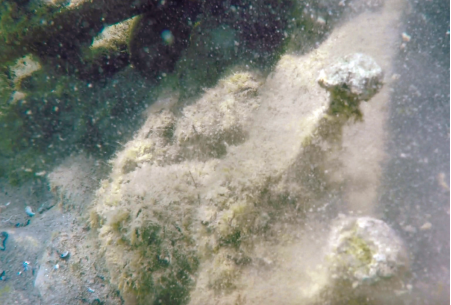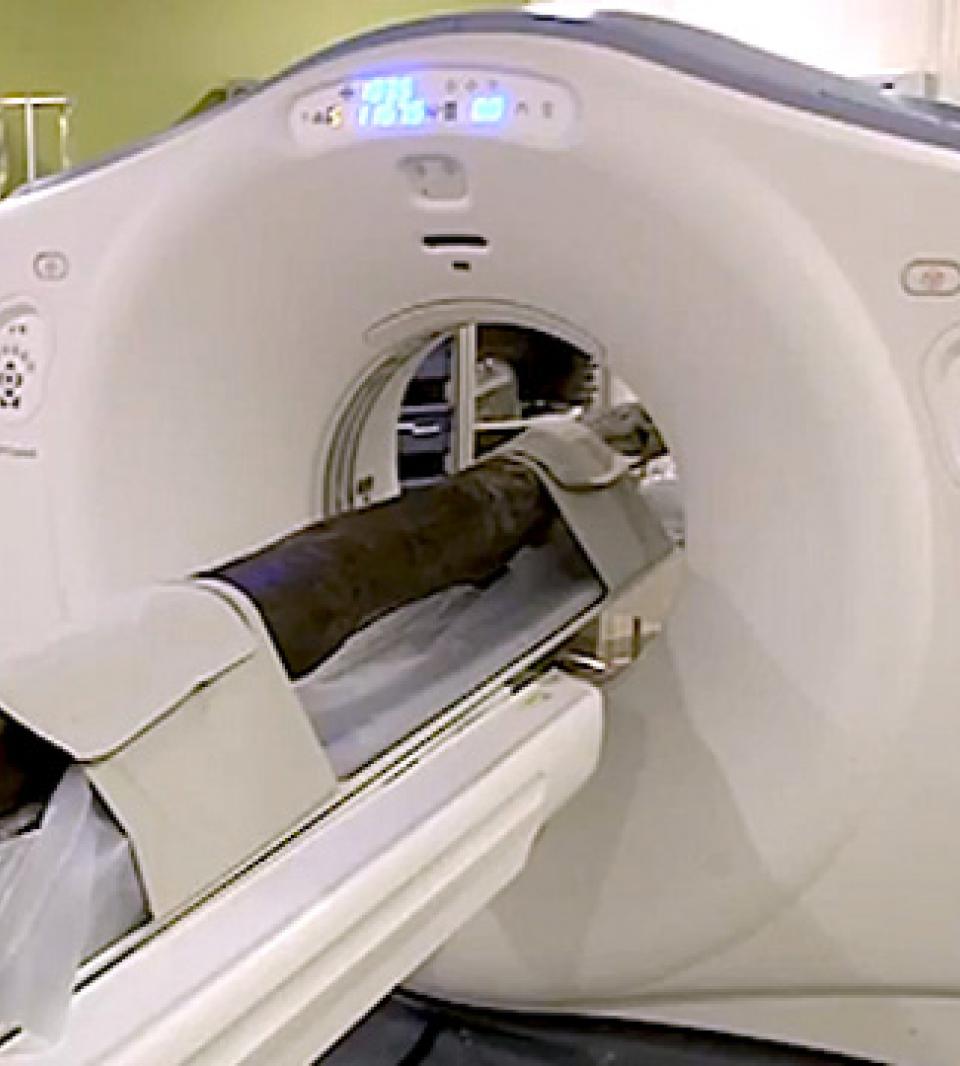It was a good day for sailing on Sept. 18, 1679, when the French ship Le Griffon left an island harbor in Lake Michigan’s Green Bay. A light wind blew from the west, perfect conditions for the vessel’s voyage to Niagara Falls to pick up supplies.
But good weather in the morning, as any visitor to the Great Lakes knows, can turn foul before breakfast ends. A storm came up on the water the day after the 45-ton, three-masted ship set sail. Neither it nor its crew of six was ever seen again.
That is, until now — if explorers who have spent years searching for Le Griffon, also known as the Griffin, are correct. They used the latest GE medical imaging technology to shed new light, or rather X-rays, on the 300-year-old mystery.
In 2001, diver and history enthusiast Steve Libert found a strange piece of timber sticking out of the muddy bottom of Lake Michigan. Libert says he’s been obsessed with studying and locating the ship since he was a schoolboy in Ohio. He suspected the wood might be the Griffon’s bowsprit, the pole that extends out from the front of a sailing ship. “There was no question about it — that this was definitely man-made,” he says. “I’ve been researching this ship since I was 14. I’m 99.9% sure it’s the Griffon.”
He was hoping that the 20-foot-long oak pole would be just the highest piece of the shipwreck that was buried in the mud beneath it, but divers who excavated the lake bottom found nothing else below it. “My hypothesis is that the bowsprit became dislodged from the ship as it was sinking and the storm moved the rest of it somewhere else,” Libert says.
But whether the wood is actually a piece of a ship is still in question, as is how old it is. Several different groups of laboratory scientists and archaeologists are analyzing it to determine its provenance.
Libert’s team sent samples for radiocarbon dating, a method of determining organic matter’s age range by measuring the decay of carbon inside it. So far, the tests have not ruled out the possibility that the wood was cut in the late 17th century. “Apparently the Griffon was built in A.D. 1679,” wrote Darden Hood, the director of carbon dating lab Beta Analytic, which analyzed one sample several years ago. “The results do support an A.D. 1679 time of death of the wood used in such a construction. However, it is clear that other lines of evidence are needed to exclude temporal possibilities extending all the way to A.D. 1950.”

Libert says the most recent round of radiocarbon dating by Beta Analytic came back on Sept. 23. Their analysis, he says, revealed with 95% probability that the beam came from a tree cut down sometime between 1680 and 1740.
In June, they recovered the whole 600-pound object from the lake’s icy waters. To get more data about the tree from which it was shaped, they needed to peer inside at the wood’s annual rings. But to count the rings, they would have needed to either drill into the pole to pull out a core or cut out a slice. Either method would have damaged the object. Instead, they called Carol Griggs at Cornell University’s tree-ring laboratory to solicit ideas. She offered an innovative potential solution: put the artifact into a medical CT scanner. Such devices use X-rays to take successive cross-sectional pictures, or virtual slices, of the body.
So they called Otsego Memorial Hospital in Gaylord, Michigan, near their storage site to see if the facility had any equipment that would be up to the task. They were lucky. Hospital officials said they had a CT scanner made by GE that might be able to do the job.
In late August, Libert and five other crew members carried the timber into the hospital and loaded it into the GE LightSpeed VCT* XT 64-slice CT scanner. In seconds, the scans started popping up on a monitor. Radiology technicians whose jobs typically had them interacting with patients, counted 29 clearly visible rings. “The images from the CT scan were nothing less than fantastic!” said Libert. “I attribute this to an excellent piece of well-designed, technological equipment along with a highly trained group of professionals at the hospital.”
The scans were sent to Cornell University’s tree-ring laboratory so specialists there could match the rings to others in their database. This might yield a better estimate of the tree’s age when it was felled. Libert expects Cornell’s analysis to be completed soon, though he cautioned that deterioration at the bottom of Lake Michigan might have damaged the beam beyond reasonable classification. “The machine was able to image 29 rings, which might not be enough,” he says. “Still, the tree-ring lab was extremely excited the scanner could even image that much.”
Not everyone is convinced the object was part of the Griffon, even if it turns out to be the right age. An Associated Press story said Michigan’s state archaeologist contends it could be a stake from a “pound net,” a type of fishing gear used for centuries in which fishermen strung nets between poles rammed into the lake’s bottom.
But contrary hypotheses won’t deter Libert, he says. If the age-detecting techniques they’re using determine that the artifact is from the late 17th century, his crew will venture back out to the vicinity of where they found it to continue their search for the rest of the vessel.
“If it turns out that this is the bowsprit of the Griffon, I believe the rest of the wreck is within four or five football fields of it,” Libert says. “I expect to find that ship intact.”
*Trademark of the General Electric Co.





